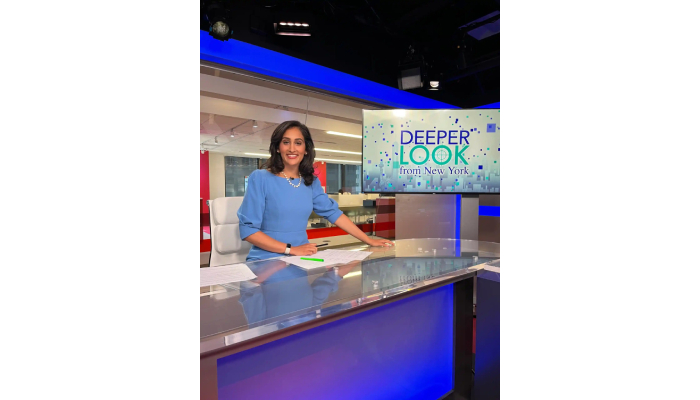
The TV news industry is changing fast, and female anchors are at the center of this shift. Economic pressures and declining viewership mean networks are restructuring and rethinking anchor roles, which affects many women in front of the camera. Many female anchors face tough choices balancing demanding careers with family life, often opting for less stressful roles or digital projects that offer more flexibility. Despite making strong contributions on screen, women still struggle with limited leadership opportunities, pay gaps, and workplace challenges like discrimination and burnout. Their presence helps bring diverse perspectives to news but keeping female talent in TV will need better support and fairer work environments overall.
Industry Changes Shaping Female Anchor Roles
The TV news industry is shifting rapidly as traditional viewership declines and advertising dollars shrink, forcing networks to rethink how they operate. This economic pressure has led to restructuring and cost-cutting, which directly affects anchor roles, including those held by women. Female anchors are seeing changes in their salaries and responsibilities, sometimes losing ground to younger, less expensive talent or being pushed to adapt to new formats. Digital platforms and streaming services draw audiences away from traditional broadcasts, making it harder for female anchors to maintain visibility and influence unless they embrace multimedia skills like social media engagement and independent reporting. Networks are often less willing to invest in long-term careers for female anchors, especially amid financial uncertainty, which can result in experienced women moving toward digital or niche media where they can retain relevance. The rise of personalized news and niche content also challenges the traditional anchor-led broadcast model, requiring female news anchors to evolve or risk fading from the spotlight. Overall, these industry changes reshape how female anchors are valued, perceived, and retained, pushing many to find new paths within the transforming media landscape.

Balancing Career and Family Life Challenges
Female news anchors face unique challenges balancing their demanding careers with family life. The nature of TV news requires irregular hours and intense schedules that often clash with caregiving responsibilities, which still fall disproportionately on women. Many anchors find themselves stepping back from on-air roles or shifting to positions with more flexible hours, like special reports or long-form interviews, to spend more time with their children and manage home life. The pressure of live broadcasting adds stress that can conflict with family needs, increasing emotional strain and contributing to burnout. Workplace policies frequently lack adequate maternity or parental leave and family-friendly support, leaving women to navigate these demands largely on their own. This often leads to feelings of guilt or societal pressure when female anchors prioritize family over career. Personal decisions to reduce visibility or leave the industry altogether are often influenced by these challenges. For example, well-known anchors like Hoda Kotb have cited family priorities as key reasons for modifying their roles. Without stronger support systems, many talented female anchors face difficult choices between advancing their careers and maintaining a meaningful family life.
Gender Gaps in News Leadership Positions
Despite women making up about 40% of journalists globally, they hold only around 24% of top editor roles. This gap means women have less influence over key editorial decisions and newsroom culture, limiting their ability to shape the news agenda in meaningful ways. The slow progress toward gender parity is clear across many countries and news organizations, with some markets having almost no women in senior leadership roles. This lack of representation at the top creates fewer mentorship and promotion opportunities for female anchors, affecting their career advancement behind the scenes. Male-dominated leadership often reinforces traditional gender roles, influencing both news coverage and staffing choices. Without diverse leaders, newsroom policies might overlook the specific needs of women, including work-life balance and safety concerns. Efforts to increase women in leadership remain inconsistent and often lack sufficient funding, slowing the pace of change. Closing this leadership gap is essential for achieving broader gender equity in TV news, but the industry still faces a long road ahead.
Barriers Female Anchors Face in TV News
Female news anchors often face a range of challenges that make their roles particularly demanding. High workloads and understaffing mean many are juggling multiple responsibilities, from reporting to editing, which leads to burnout. This pressure is worsened by a lack of family-friendly policies and support, making it difficult for women to balance their careers with personal life, especially when caregiving is involved. Despite some progress, gender discrimination remains a problem, with unequal pay and limited recognition common issues that affect morale and career advancement. Sexism and harassment continue to pose serious challenges both on and off camera, creating safety concerns that need stronger protections. On top of this, there is constant pressure to meet strict appearance standards, which can add stress and limit female anchors from showing their authentic selves. Systemic biases in workplace culture often restrict growth opportunities, leaving many female anchors feeling undervalued and overlooked. The public nature of their work also brings challenges in maintaining personal privacy, which can be taxing over time. Altogether, these persistent barriers contribute to many women leaving traditional TV news roles or shifting their careers toward more flexible or less visible positions.
How Audience Trends Affect Female Anchors?
Audience habits are shifting rapidly, and this has a significant impact on female news anchors. With more viewers turning to social media, news apps, and streaming services, traditional TV broadcasts are losing their reach, especially among younger audiences. This fragmentation means female anchors no longer command the broad live audiences they once did, which affects their visibility and influence. Despite the shrinking TV viewership and network budget cuts, female anchors continue to bring diverse perspectives to the screen, challenging outdated ideas about how women should look and sound on camera. Audiences now want authenticity and realness, which puts pressure on anchors to adapt their presentation styles and engage across multiple platforms beyond the TV studio. Some female anchors have embraced digital channels to maintain or even grow their following, proving that adaptability is key in this changing landscape. Though the traditional anchor-led newscast has less sway, female anchors remain vital for representing women’s voices and issues in the news, even as they navigate the complexities of evolving audience preferences and media consumption habits.
Female Anchors Influencing News Content and Style
Female news anchors have played a key role in shaping how TV news covers stories and connects with viewers. Their presence encourages more inclusive reporting, often bringing attention to women’s issues and other underrepresented topics that might otherwise be overlooked. Unlike the traditional, rigid delivery often associated with news, female anchors tend to blend professionalism with a relatable and approachable style, which helps build trust and engagement with diverse audiences. This shift has diversified the tone and presentation of news programs, making them feel less formal and more accessible. Beyond their role as presenters, many female anchors influence editorial decisions and story selection, contributing fresh perspectives that enrich the overall news narrative. Their visibility challenges longstanding gender roles in journalism and expands representation on screen, reflecting a broader slice of society. While economic pressures and structural barriers limit the extent of their influence in some cases, female anchors often push for change within newsroom culture and policies, supporting gradual progress toward more equitable and diverse environments. Their work not only changes how news is delivered but also helps reshape the newsroom itself, fostering a media space that better reflects the complexity of the audiences it serves.
Keeping Women in TV News: Industry Solutions
To retain female news anchors, the TV industry must adopt policies that support a better work-life balance, including flexible scheduling and comprehensive parental leave. Many women in journalism face demanding hours and emotional strain, so providing mental health resources is essential to help them manage stress and avoid burnout. Addressing pay equity and establishing clear career advancement paths can encourage women to stay and grow within the news environment. Creating safe workplaces free from harassment and discrimination remains a top priority, ensuring women feel respected and secure. Leadership development programs tailored for women help build skills and confidence needed for higher roles, while mentorship and sponsorship initiatives provide ongoing support and guidance. Transparency in hiring and promotions fosters trust and fairness, which can combat systemic barriers that often sideline female talent. Family-friendly workplace practices, such as onsite childcare or flexible remote work options, also play a crucial role in retaining women who juggle professional and caregiving responsibilities.
Future of Female Anchors in a Changing Media Landscape
Many female news anchors are reevaluating their roles as the industry shifts and new challenges emerge. Some are moving away from traditional TV to digital platforms, independent media, or roles that allow more flexibility and less public scrutiny. Others remain committed to broadcast news, advocating for safer, fairer workplaces with flexible schedules and equal opportunities. Despite progress, gender parity in leadership remains distant, with women still underrepresented in top editorial positions. Technology will continue to transform how female anchors connect with viewers, blending on-air presence with digital projects and entrepreneurial efforts. Lasting change depends on media companies dedicating themselves to diversity and inclusion, along with cultural shifts in newsroom attitudes toward gender. Female anchors will keep shaping news delivery and who it serves, but retaining their talent requires ongoing support, fair policies, and a commitment to equity across the industry.